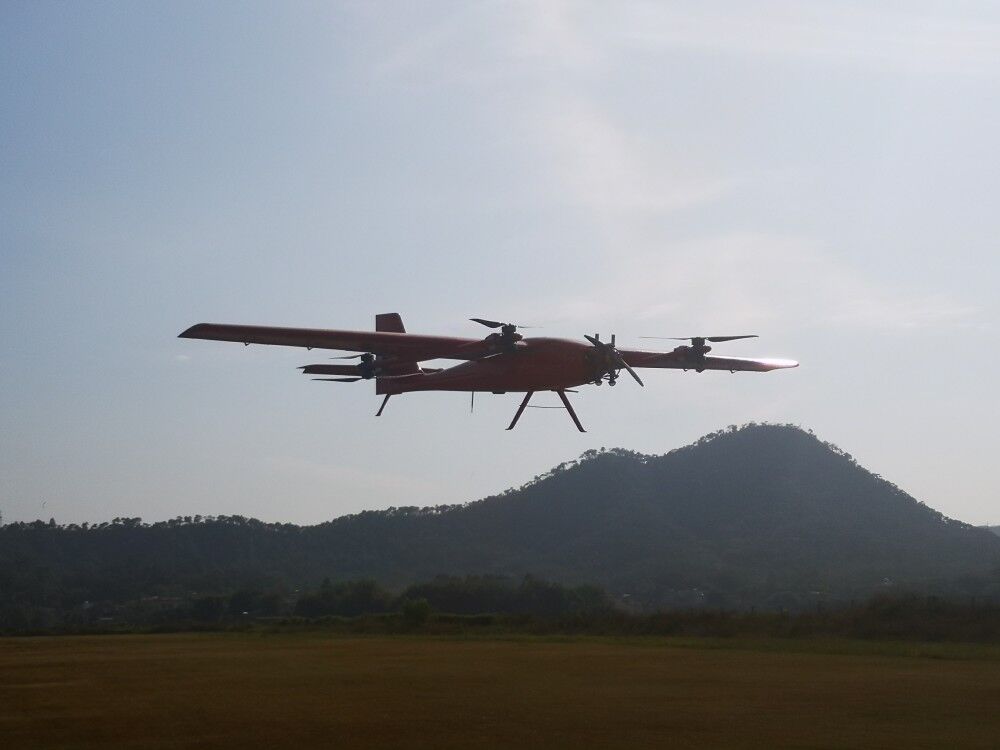
Foreign media reports: Meteorological researchers are discovering the value of using drones for scientific research. In a project designed to help understand current climate issues, a BOREAL fixed-wing UAV equipped with specialized sensors was used to collect data from the surrounding area of Barbados.
Through the use of multiple drones for scientific research, the EUREC4A project also demonstrated the safety coordination of multiple aircraft: short-range drones, long-range fixed-wing drones, and manned aircraft, using satellite positioning and satellite positioning shared with all operators on the ground. Communication Systems.

In August of this year, the northern cities of China were affected by the drought, with little rainfall, and farmers’ crops were severely affected. Flying Dragon Aviation Technology Co., Ltd. adopts FD180P large vertical take-off and landing fixed-wing aircraft that can carry 18 artificial rainfall bombs to achieve artificial rainfall. A bumper grain harvest for farmers provides guarantee

Flydragon FD180P The UAV
platform is a large-scale oil-powered long-haul composite wing vertical
take-off and landing drone independently developed by our company. The overall
layout of the composite wing with fixed wing and four-rotor is used to solve
the fixed-wing UAV vertical in a simple and reliable way. The problem of
take-off and landing, combined with the characteristics of fixed-wing UAV's
longitude, high speed, long distance and the vertical take-off and landing of
the rotorless drone, the vertical take-off and landing mode greatly enhances
the environmental adaptability of the UAV platform. The UAV platform can
smoothly operate in complex terrain and densely populated areas such as
mountains, hills and jungles, greatly expanding the scope of application of
drones, and is an ideal choice for industrial-grade drones.
The FD180P
UAV platform is equipped with industrial-grade vertical take-off and landing
fixed-wing flight control and strapdown inertial navigation system, as well as
professional aerial aerial survey and inspection ground station software. It
can ensure that the drone can fly autonomously and complete the autonomous
takeoff without operator intervention. In the flight phase of flight state
transition, autonomous cruise, and autonomous landing, it also supports
automatic route planning for more than 1000 waypoints and emergency standby
plan for 100 waypoints.
The
drone platform has the following features and advantages:
a)
Practical and efficient: it has the characteristics of fixed-wing UAV's long
flight time, fast speed, long distance and large load;
b)
Vertical take-off and landing: with the take-off and landing mode of the
rotorless drone, greatly reducing the requirements for landing and landing and
airspace;
c)
low cost of use: no complicated and bulky launching and recycling equipment, no
additional recycling sensors required;
d)
Simple operation: integrated special flight control and navigation system, full
autonomous flight, operators only need to send flight plans, no professional
training and operational experience;
Performance
parameter
Body length
3.35m
Wingspan
6.5m
Maximum takeoff weight
180kg
Maximum payload
40kg
Endurance
8h~10h
Flight radius
300-500km
(depending on the amount of oil loaded)
Maximum control distance
Remote control (manual control): 1km
Ground station control (depending on the distance
of the digital transmission): 30km standard
Maximum speed
130km/h
Cruising speed
100-120km/h
Maximum oil load
40L
Lift limit
5000m
Maximum wind resistance
12m/s(6 level winds)
Use environment
-10℃+45℃; anti-light rain
Vertical takeoff and landing
32*8000mAh-6S Li battery
Takeoff and landing mode
Vertical takeoff and landing
Contact: Fly Dragon Drone Tech.
Email: frank at dronefromchina.com
Add: NO. 9 Dayu Road PiDu distric, ChengDu 611730, China